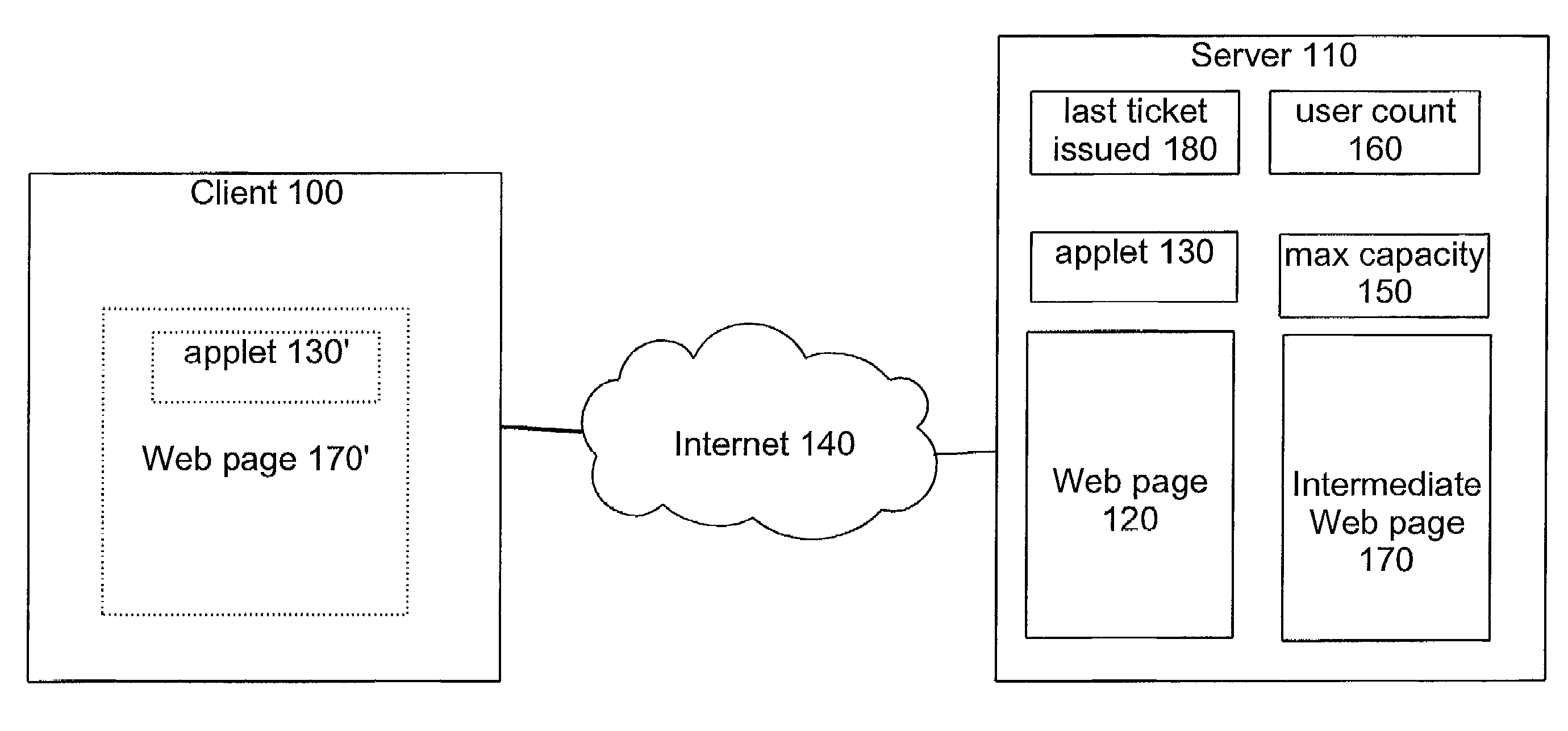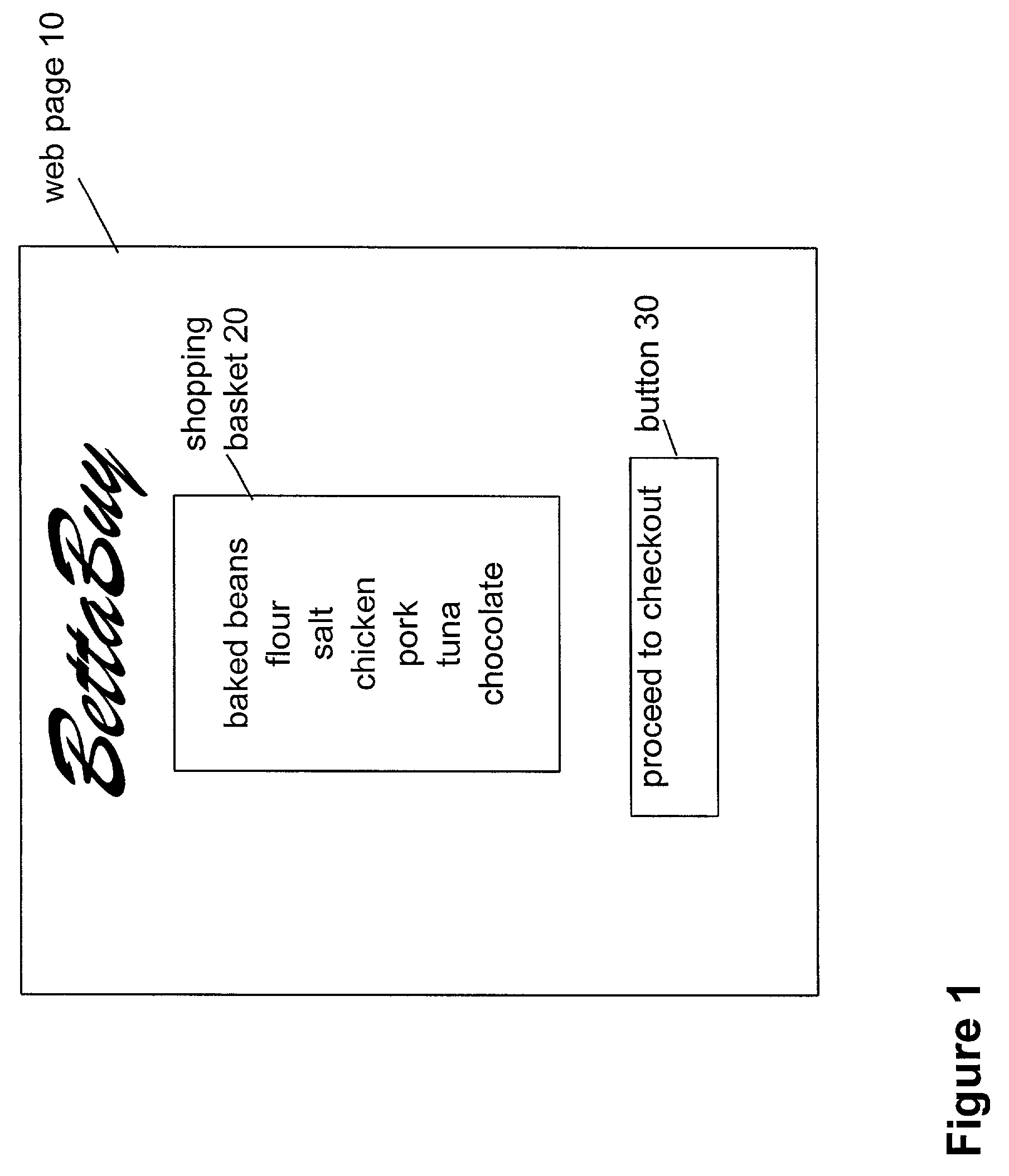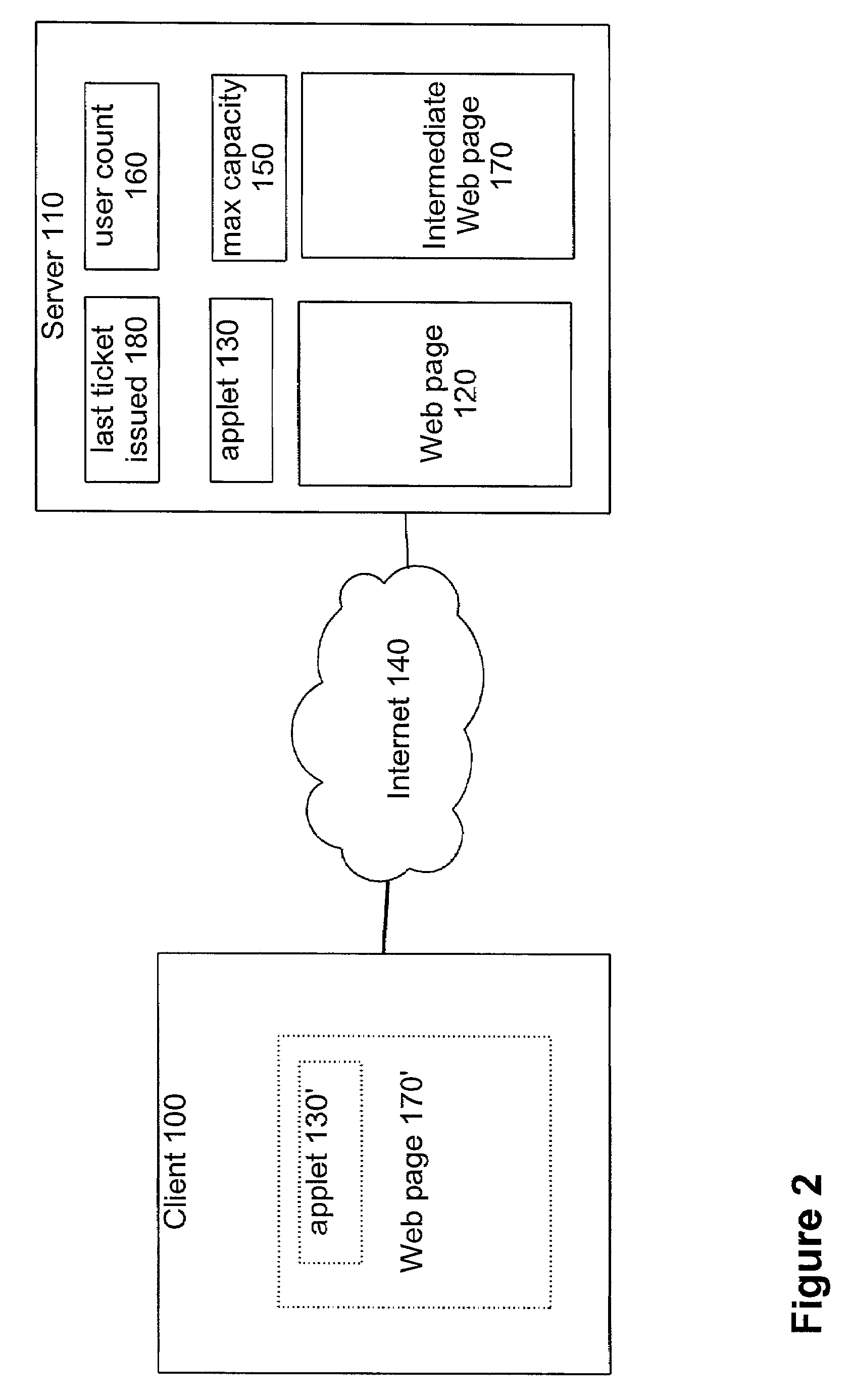Regulating access to a scarce resource
- Summary
- Abstract
- Description
- Claims
- Application Information
AI Technical Summary
Benefits of technology
Problems solved by technology
Method used
Image
Examples
first embodiment
[0046]FIGS. 2, 3a and 3b illustrate web site access to a scarce resource (such as the checkout of FIG. 1) in accordance with the present invention. Client 100 requests access to the scarce resource (web page 120) at step 200. The web page 120 resides on a server 110 and is requested by the client over the Internet 140.
[0047]At step 210 the server determines whether a desired maximum capacity access level for the scarce resource has been reached using max capacity component 150, which queries a user count 160. The user count keeps track of the number of people currently accessing the scarce resource. If the answer at step 210 is no, then access is granted to the scarce resource (step 220) and web page 120 is downloaded to the client (not shown). One is added to the user count 160 (step 230).
[0048]Conversely, if it is determined at step 210 that the server is at the desired maximum capacity for the scarce resource, then an intermediate web page 170 is downloaded from the server to the...
second embodiment
[0055]FIG. 5 illustrates web site access to a scarce resource according to the present invention. When a user attempts to access the scarce resource and it is determined that the server is already at a desired maximum access level for that resource, the server issues the user with a numbered ticket (step 400). The server maintains a list of waiting clients (users) and a corresponding ticket number for each (step 410). Whenever a client relinquishes access to the scarce resource (step 420), the server determines which client is now at the head of the queue (step 430) and sends a message to that client granting access (step 440). One is added to a user count (step 450). The server also sends periodic update messages to each waiting client to keep them informed of their progress and this is displayed to the user. Once again a range of ticket numbers is typically served. It will be appreciated that in this embodiment the connection between the server and each client is preferably perman...
third embodiment
[0056]FIGS. 6 and 7 illustrate web site access to a scarce resource according to the present invention. In this embodiment, a client attempts to connect to a server hosting a scarce resource. If it is determined that the server is already at a desired maximum access level for that resource, then a cookie is set which includes within it a ticket number (step 600). This is stored on the client's hard drive. Every time the client attempts to connect to the same web site, it presents this cookie to the server hosting the web site. The client makes such attempts at regular intervals (step 610). In one embodiment it does this by displaying a “Please click the browser reload button” message periodically to the user. In another embodiment, the web page from which the user can request access to the scarce resource contains an HTML client refresh tag. This tag forces a specified page (URL) to reload automatically every N seconds and takes the effort away from the user. It is of the form:
[0057...
PUM
 Login to View More
Login to View More Abstract
Description
Claims
Application Information
 Login to View More
Login to View More - R&D
- Intellectual Property
- Life Sciences
- Materials
- Tech Scout
- Unparalleled Data Quality
- Higher Quality Content
- 60% Fewer Hallucinations
Browse by: Latest US Patents, China's latest patents, Technical Efficacy Thesaurus, Application Domain, Technology Topic, Popular Technical Reports.
© 2025 PatSnap. All rights reserved.Legal|Privacy policy|Modern Slavery Act Transparency Statement|Sitemap|About US| Contact US: help@patsnap.com



